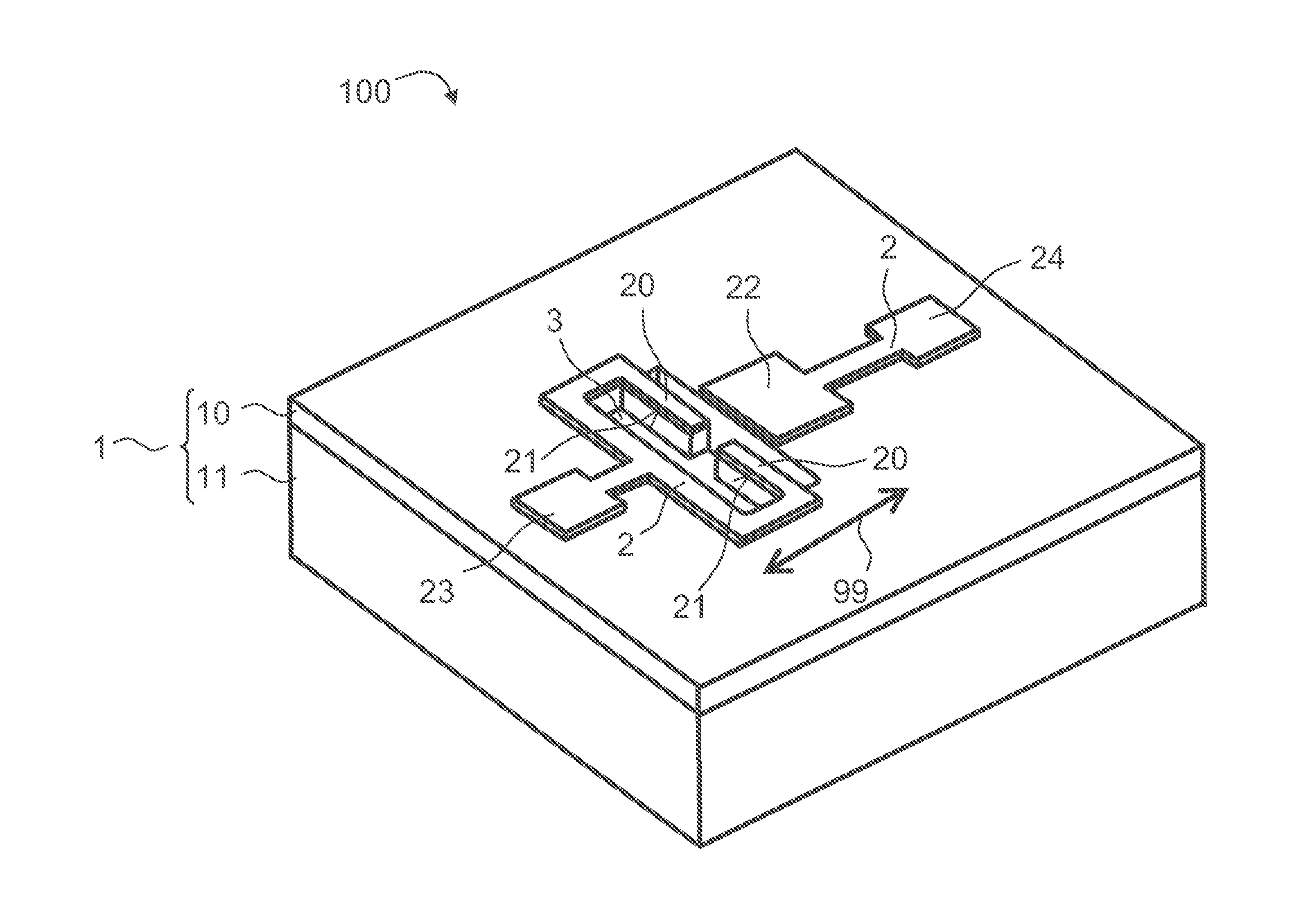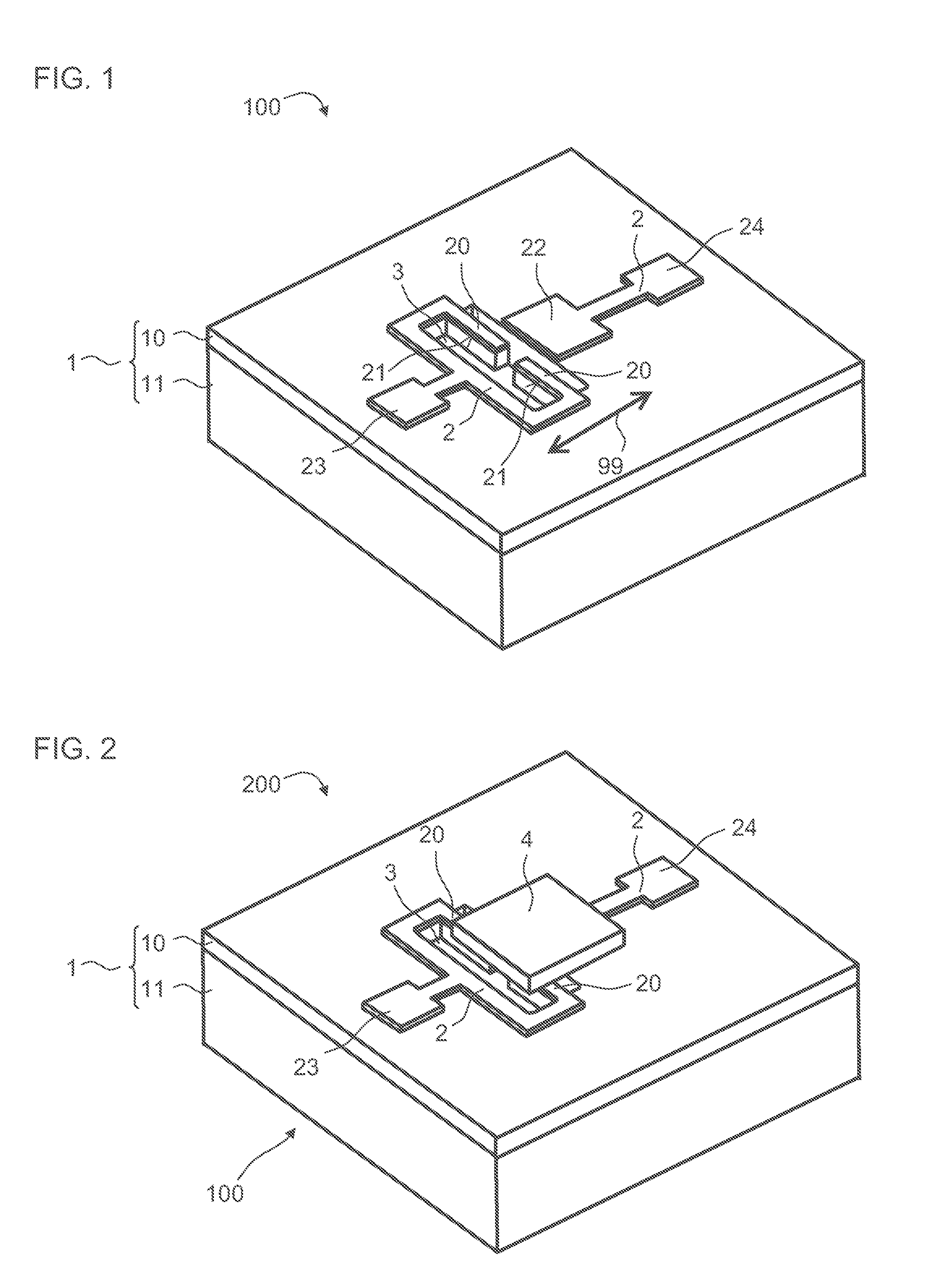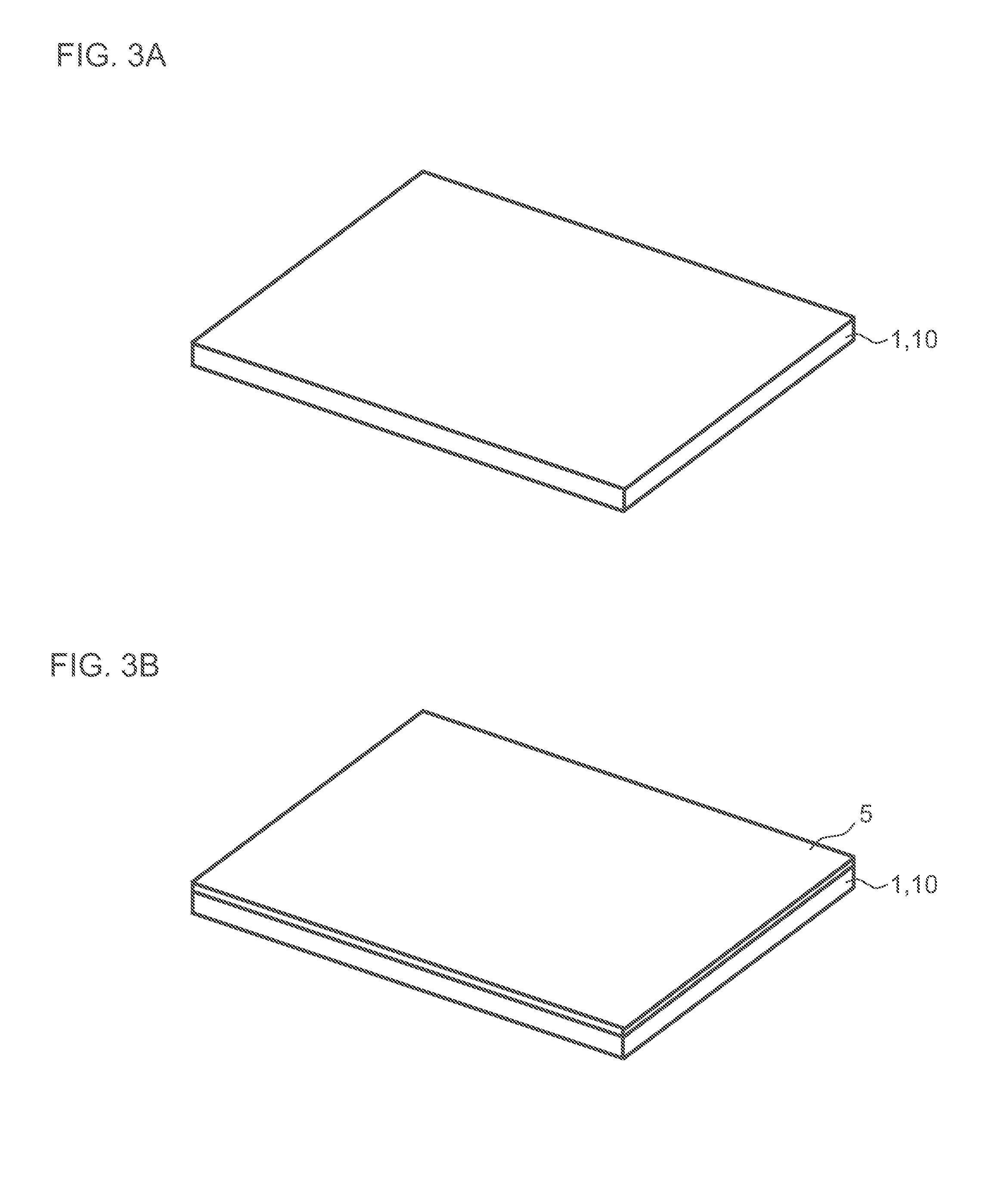Carrier Device, Electrical Device Having a Carrier Device and Method for Producing Same
a carrier device and carrier technology, applied in the direction of printed circuit non-printed electric component association, conductive pattern formation, printed electric component incorporation, etc., can solve the problem of shifting of cte mismatch, increasing production costs, and cte mismatch at least at the interface between the substrate and the mounting area. problem, to achieve the effect of reducing the risk of failure and reducing mechanical stresses
- Summary
- Abstract
- Description
- Claims
- Application Information
AI Technical Summary
Benefits of technology
Problems solved by technology
Method used
Image
Examples
Embodiment Construction
[0049]FIG. 1 shows one exemplary embodiment of a carrier device 100. The carrier device 100 comprises a carrier 1, which, in the exemplary embodiment shown, is formed an electrically insulating layer 10, formed from a plastic material, for example, a plastic material for circuit boards or printed circuit boards, said electrically insulating layer being arranged on a carrier layer composed of a metal, for example, aluminum. By way of example, the electrically insulating layer 10 and the carrier layer 11 can be parts of a metal core printed circuit board (MCPCB), such that the carrier 1 is embodied as a metal core printed circuit board.
[0050]An electrical contact layer 2 is applied on the electrically insulating layer 10, said electrical contact layer forming an interconnection plane of the carrier device 100. As described below in conjunction with a further exemplary embodiment in association with FIGS. 3C and 3D, the electrical contact layer 2 can be produced, for example, by means ...
PUM
| Property | Measurement | Unit |
|---|---|---|
| thickness | aaaaa | aaaaa |
| thickness | aaaaa | aaaaa |
| width | aaaaa | aaaaa |
Abstract
Description
Claims
Application Information
 Login to View More
Login to View More - R&D
- Intellectual Property
- Life Sciences
- Materials
- Tech Scout
- Unparalleled Data Quality
- Higher Quality Content
- 60% Fewer Hallucinations
Browse by: Latest US Patents, China's latest patents, Technical Efficacy Thesaurus, Application Domain, Technology Topic, Popular Technical Reports.
© 2025 PatSnap. All rights reserved.Legal|Privacy policy|Modern Slavery Act Transparency Statement|Sitemap|About US| Contact US: help@patsnap.com



